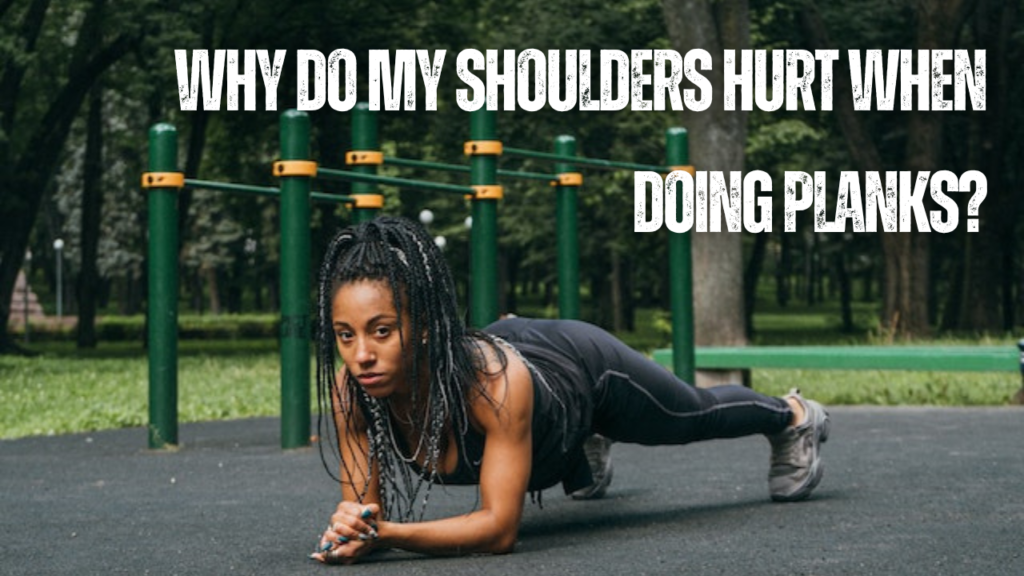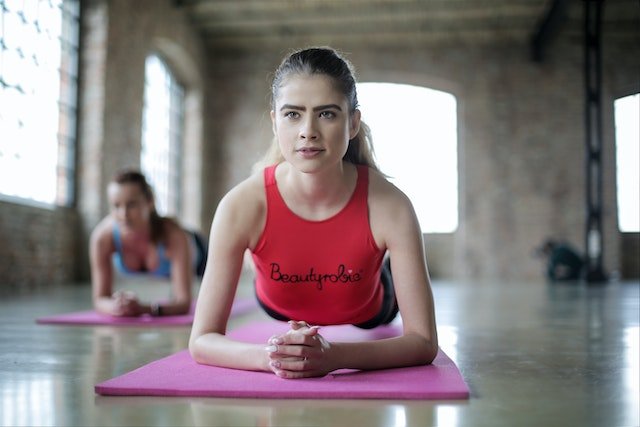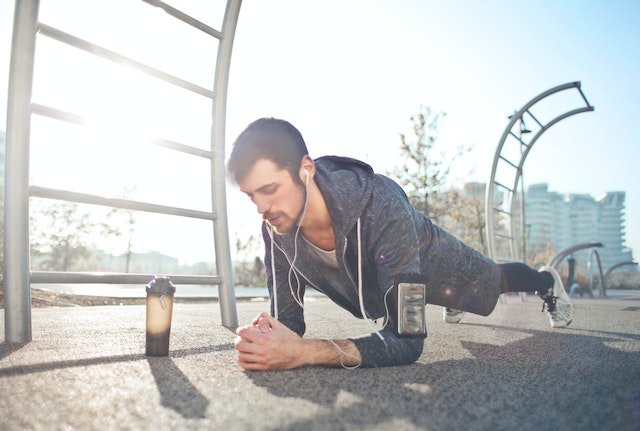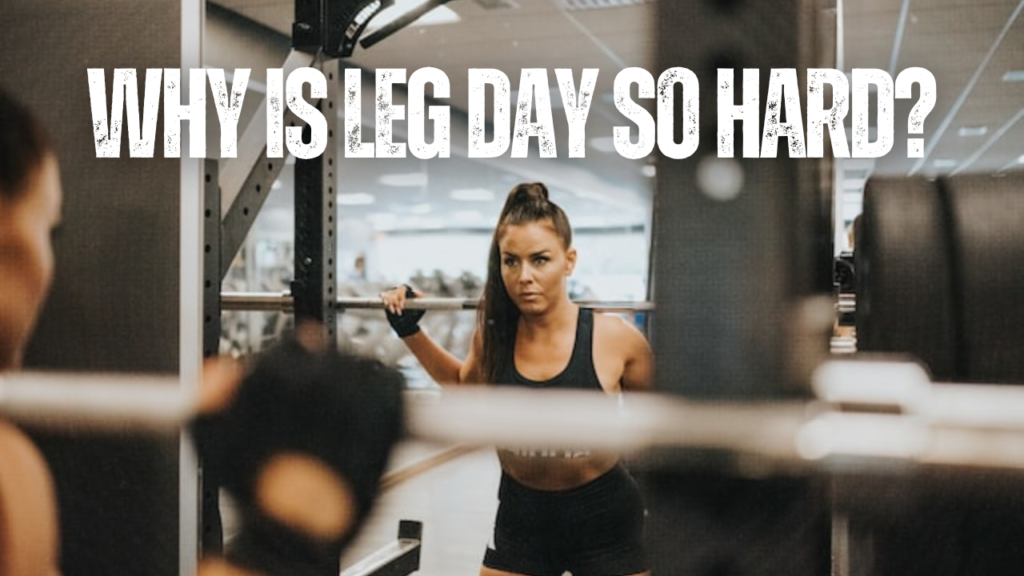
Why Do My Shoulders Hurt When Doing Planks? Problem Solved
Doing planks is one of the most effective ways to strengthen your core, but for many people, they can come with a downside – shoulder pain.
If you’ve ever wondered why your shoulders hurt while doing planks, then you’re in the right place.
In this blog post, we’ll be discussing some possible causes of shoulder pain when doing planks and how to alleviate or prevent it from occurring altogether. So if you’re ready to find out why your shoulders ache after planks and get back on track towards reaching your fitness goals, read on!
Why do my shoulders hurt when doing planks?
Your shoulders could hurt while doing planks for various reasons. Although planks are a relatively simple exercise in principle, they can be a different story in practice. First and foremost you need to figure out if the pain is muscular or bone-related, as this can have a bearing on how the problem is solved. If you are doing the extended plank, which is where you are in a push-up position with your arms straight, consider dropping down onto your elbows to see if this helps relieve shoulder fatigue. If you experience muscle soreness or fatigue while planking, the issue could be related to overuse of your elbow extensors. This can happen if you hold the plank for too long, with incorrect arm position or with too much volume (number of repetitions and sets). Alternatively, if you have weak muscles or imbalances in your shoulder girdle and core area, doing planks can cause pain due to the lack of stabilization. You may not be able to hold a proper plank position due to inadequate strength in some stabilizing muscles around the shoulder joint, or if you have a reduced range of motion (ROM). You may also be sagging or collapsing when doing planks, which will increase stress on your shoulders and can lead to pain. The best way to figure out why your shoulders hurt when doing planks is to seek advice from a qualified fitness professional who can assess you and advise on the most appropriate course of action.
If your shoulders hurt when doing planks, don’t worry there are a few things you can do to help alleviate the pain.
New to you?
This might sound pretty obvious but…if planks are new to you, then it is likely that your body isn’t used to the exercise, and hence you are feeling some discomfort. The best way to prevent this is to start off slow and work up to more advanced versions of the plank when your body gets used to it.
Whenever your body does something different it will take time for it to adapt, so even if you feel like you can do more, take it slow and give your body time to adjust. If your shoulders aren’t used to the exercise, they will likely be screaming at you to stop, and that’s normal.
Remember, you must be patient and persistent as it will take time for your body to adjust.
If you aren’t used to holding your own body weight while doing a plank, then consider doing them off your knees, or if that’s still too much lean against a chair at a 45º angle until you get familiar with the exercise and your body in the position.
Your body may have not used these deltoid muscles in this capacity for a long time, if ever…so try not to worry if this is the case. Plus, you also have to figure out whether the pain is muscular or bone-related.
Muscular or bone-related?
If you are experiencing any discomfort while doing planks, you first need to figure out if the pain is muscular or bone-related.
If you experience muscular pain when doing planks, then it’s most likely to feel like a burning sensation in the muscles and could be due to overuse. This is because planks are an exercise that requires you to use all of your stabilizing muscles around the shoulder joint, so if these muscles aren’t used to this type of load they may become tired quickly.
If the pain is bone-related, it could be due to a lack of stabilization, reduced range of motion or something called impingement syndrome. This is where the shoulder muscles, tendons and bursa become entrapped between two bones in the shoulder joint.
If you are experiencing bone-related pain when doing planks, it’s best to seek advice from a qualified fitness professional who can assess you and advise on the most appropriate course of action.
Either way, it’s best to start off slow and work your way up as you get used to the exercise. Also, make sure that you are doing planks correctly, if not then this could be causing unnecessary strain on your shoulders and leading to pain.
Form over everything else
When performing planks, your form is more important than anything else. It’s essential that you make sure your body is in a straight line, from your head all the way down to your toes.
Your shoulders should be stacked directly above your elbows, and you should keep them relaxed. It’s also important to engage your core and keep it tight throughout the exercise – this will help with balance and stabilization, as well as protect your back from injury while planking.
One critical part that doesn’t get mentioned much, is to make sure you tense those glute muscles because this will also help with stability and balance.
If you are still experiencing shoulder pain after ensuring your form is correct, then consider dropping down onto your elbows as this may relieve some of the strain on your shoulders.
Your feet should be hip-width apart, and your toes pointing down to the ground – this will help with balance.
Ensure that you are breathing steadily throughout the exercise. Taking deep breaths in and out helps to relieve tension from the body and is a great tool for managing any discomfort while planking.

Extended plank
If you have been doing the extended plank, which is where you are in a push-up position with your elbows locked and arms straight, then consider dropping down onto your elbows to see if this helps.
The extended plank will make your shoulders work that much harder due to the greater load that is placed on them and may lead to increased fatigue. If this is the case for you, then it’s best to stick to the standard version until you become accustomed to doing planks in general.
The beginner-friendly standard plank is the perfect place to start, with elbows bent and forearms resting on the floor. This easy variation provides less strain on your shoulders than its counterpart -the extended plank – so it’s ideal for those just starting out or who have shoulder problems.
Staying in the extended plank may also burn out your arms before you are able to finish your set and also put a strain on the wrists due to the angle.
Volume and Frequency
If you have been doing planks for a while and are still experiencing shoulder pain, then it could be due to overuse. It is important to remember the importance of rest in any exercise program.
It goes without saying that if you are doing planks after a shoulder session, the fatigue in the muscles will be much greater and more likely to cause pain. Taking into account volume and frequency is important when it comes to avoiding any overuse injuries.
To prevent shoulder pain from planks, take regular breaks, or reduce your set duration or number of sets. Rest days are also essential for recovery.
Make sure you allow your body enough time to recover between sessions – this will ensure that your muscles don’t become too fatigued and overwhelmed. Additionally, try to alternate the type of planks you are doing on different days – this will help break up the monotony and provide variety in your program, as well as reduce any risk of overuse injury.
So if your shoulders have started hurting while doing planks, don’t be alarmed – chances are it’s just due to incorrect form or overuse.
Arm position
This is probably the most common reason why people have any kind of issue when it comes to planks. Your arms should be directly below the shoulders – if they are in any other position, then you can expect shoulder discomfort.
To maximize the effectiveness of a plank, it is essential to ensure that your body has a solid foundation. This means avoiding having your arms positioned too far forward, below, wide or narrow.
This is because your shoulder joints will be way more vulnerable in any other position and as a result, you will be more likely to experience pain.
It is important to make sure your arms are positioned correctly before you start planking and remain there throughout the exercise. This will help ensure that strain is placed on the right muscles and not just on your shoulders.
Additionally, keep your core engaged throughout the exercise – this will help to support your body’s form and ensure that all the right muscles are being utilized. This applies to both extended and standard planks and will help to reduce any chance of shoulder pain.
Related: Why do my arms hurt when doing planks?
Body weight
If you are overweight it can be difficult to hold up your own body weight. This can put extra strain on your shoulders and make them more prone to fatigue.
If this is the case for you, then it may be best to start with kneeling planks until your body becomes more accustomed to supporting itself in that position. Alternately, try using a wall or any other surface to lean against while planking as this will reduce the amount of body weight you are supporting.
This should provide you with enough support to get used to doing planks, while still allowing your shoulders time to adjust and adapt. Plus, it won’t be just your shoulders that will benefit – these variations will also help with improving your balance and coordination, which are essential skills for any exercise routine.
If you are overweight, stick with it – you can gradually increase the amount of time and sets you do until your shoulders become more accustomed to planking.
Not warming up
It is crucial to warm up before any exercise, including planks. If you are skipping the warm-up or not doing it correctly, then your body will be less prepared for the physical demands of planking and thus more prone to pain.
A proper warm-up should consist of dynamic stretches – exercises that involve movement and increase your heart rate, like skipping or jumping jacks. This helps to prepare your body for the upcoming physical activity and prevents any injuries from occurring.
Make sure to take your time with warm-ups, as rushing through them can be counter-productive. Aim for at least 5 minutes of warm-up before starting your planks – this should provide you with enough time to get your body ready for the exercise.
Weak muscles and imbalances
If your shoulders are hurting then it could be due to weak muscles or imbalances.
For example, if the muscles around your shoulders are weak, then they may not be able to support you when performing a plank and this can lead to fatigue and pain.
Similarly, if the muscles in one side of your body are weaker than the other, then it will be difficult to maintain proper form while planking and your shoulder discomfort could worsen.
Weak muscles can put extra strain on the joints and cause pain and discomfort, so it is important to strengthen any areas that may be weaker than others in order to balance out your body. This can be done through targeted exercises such as push-ups, shoulder exercises and tricep dips.
Imbalances can also be a problem – if your muscles are too tight or weak in certain areas then they won’t be able to support your body correctly while doing planks. To fix this, you may need to do some stretches and strengthening exercises that specifically target the areas of imbalance.
Weak muscles and imbalances are often the outcome of an injury or improper technique and should be addressed as soon as possible. With the right form, proper warm-up and consistent strengthening routine, you can reduce your chances of experiencing shoulder pain while planking.

Stabiliser muscles
The shoulder is a very fragile joint, it moves more than any other joint in the body and relies heavily on stability from the surrounding muscles.
If your stabilizer muscles are weak, then they won’t be able to provide enough support for your shoulder and this can cause pain. The rotator cuff is comprised of four muscles: the Subscapularis, Infraspinatus, Teres minor and Supraspinatus which all help to keep the shoulder stable and supported.
If these muscles are weak then it can lead to pain and instability in your shoulder. To ensure that these muscles are strong enough, make sure you include exercises such as shoulder presses, rows and lateral raises into your routine. These will help to strengthen your stabilisers, allowing you to plank for longer periods without any issues and also help with other exercises.
ROM
If you have a restricted range of motion (ROM) then this could also be a factor when it comes to shoulder pain.
A lack of flexibility can limit your ability to perform certain exercises and this is especially true for planks, as the shoulders need to move through their full range of motion in order to properly execute the exercise. If your muscles are too tight then they won’t have the necessary freedom of movement and this can cause you issues.
Stretching before and after a workout is essential for maintaining good flexibility, and it should be done regularly to prevent any tightness from developing. Targeted stretches that focus on the muscles around your shoulder are especially important if you experience pain while planking.
Again, previous injuries can cause ROM issues as the muscles may not stretch all the way back to their normal position. If this is the case, then you may need to visit a physiotherapist or massage therapist in order to get your muscles and joints back into proper alignment.
Sagging – collapsing
When performing planks, it is important to focus on keeping your posture correct and your hips at the same level as your shoulders.
If you are sagging or collapsing in the middle then this can put extra stress on your shoulder joints and cause pain. It is important to keep a strong core when planking – if you feel like your body is collapsing then try to engage your abdominals and glutes to help keep you in line.
If the problem persists, then you may need to reduce the length of time spent planking or focus on other strengthening exercises that target your core before returning back to planks.
The secret weapon to a successful plank lies in the glutes. As they are one of the main muscles used when planking, it is important that your glutes remain engaged throughout the exercise to provide support and stability for your body.
If you find yourself sagging or collapsing in the middle then try squeezing your glutes together – this will help to keep everything in line and prevent extra strain on your shoulders.
Related: Why are my abs gone right after ab workout?
Final thoughts…
It is important to remember that everyone’s body is different and what works for one person may not work for another.
If you experience pain while planking then it is best to assess the situation – figure out if your shoulder pain is muscular or bone-related, ensure that your stabiliser muscles are strong enough and focus on keeping good posture with your glutes engaged. It is also important to make sure that you are not overworking yourself, as this can cause your shoulders to become fatigued more quickly.
By understanding why your shoulders may hurt while planking and following the above tips, you will be able to continue enjoying planks without the added pain!
Have your shoulders hurt when doing planks and have these tips helped? Let us know in the comments below.


